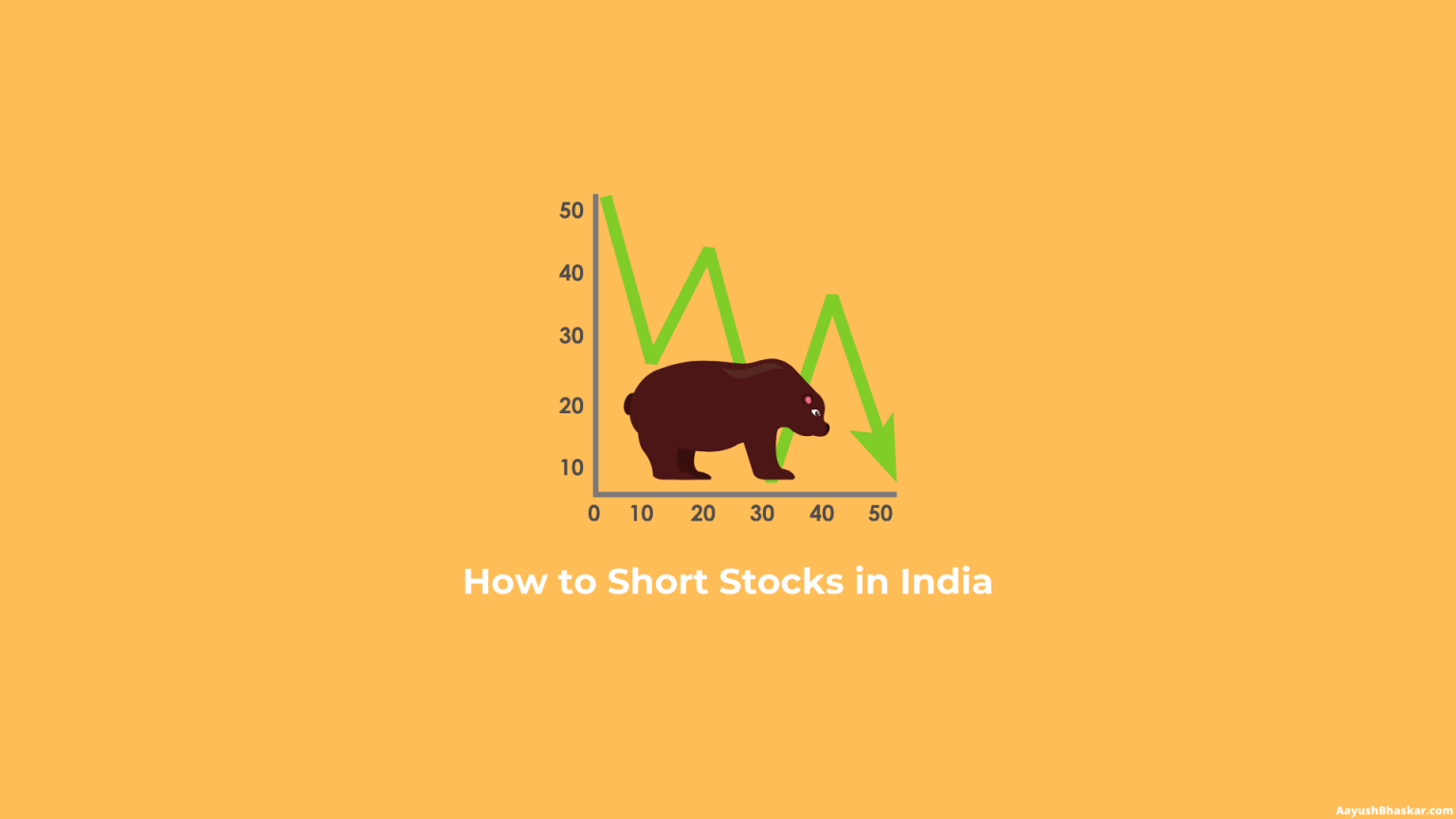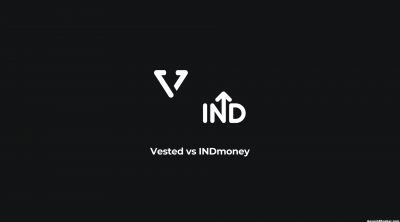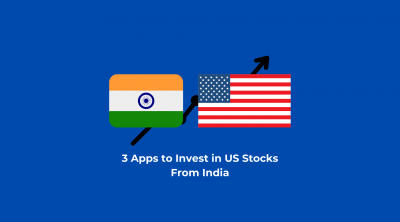Most Indian stock market trading takes place on two major platforms known as the Bombay Stock Exchange (BSE) and the National Stock Exchange (NSE). The BSE exists since 1875. However, trading in the NSE started in 1994.
A stock market is a dynamic place with numerous companies listed, stocks of which are traded on a daily basis. Sometimes, the market witnesses a bull period, and sometimes, the bear period.
Shorting, or short-selling, is an investment or trading strategy used by people to make money through speculation.
An investor borrows the shares from a broker without knowing to who they belong. They then sell the shares immediately in the hope to scoop them up later at a lower price.
This lower price enables them to return the shares back to the broker and pocket the difference. This difference is their income.
However, shorting is a risky process. It is definitely more complicated than buying stocks or obtaining a long-term position in the market.
This strategy basically speculates on the decline of the stock’s price and should only be undertaken by highly skilled and advanced traders or investors.
Investors of all classes, retail and institutional, are allowed to short-sell stocks in India.
Below are some pros and cons of short-selling –
PROS:
- Assist in price discovery by improving bid-ask spreads and providing liquidity to the markets, lowering the stock prices.
- Enables to reduce of the overall market exposure of a portfolio and hedge of an already existing one.
- Exposure to long and short positions reduces a portfolio’s overall volatility.
- Adds significant risk-adjusted returns.
CONS:
- The situation of a short squeeze results in heavy losses.
- Less liquid stocks are very expensive to borrow.
- The exchange holds the right to ban or limit short selling during extremely volatile market conditions. Hence, if this is your only way of income, it might be a highly risky one.
- The broker can recall the borrowed stocks at any time when short-sellers have limited control over the price.
- If the company gives dividends between the period of your borrowing the stocks and returning them back, the traders need to pay it out of their pocket.
- Shorting stocks are inherently volatile and the riskiest of all.
If you are someone who wants to short-sell stocks in India, here is how you can do the same –
Analyze the stocks closely:
It is imperative to understand and analyze each stock before choosing the one you want to short sell.
This involves reading their past records, going through the graphs, and being aware of the latest news related to that company.
Borrow the stock you want to bet against:
Once you have analyzed all the stocks carefully, it is time for you to choose. You can either choose one single stock or multiple of them. As you select the stock you want to short-sell, you need to contact your broker.
Ask your broker to find the stocks you feel will go down in price. He then locates a suitable investor and borrows the shares from them with a promise to return them back on a mutually agreed date.
You get the shares. But do not forget, nothing comes for free. In order to borrow the shares, you need to pay interest to the broker for the same. This is his commission.
Immediately sell the shares:
As soon as you get a hold of the borrowed shares, directly sell them without wasting any time.
This lets you cash the maximum profit that you will be getting when the price falls. The amount that you get from the sale is yours, for now.
Waiting time:
After selling the shares, now all you have to do is wait. Wait until the price goes down to a level you had thought of. There is no set rule about how long a shorting can last. The borrower, however, can be asked to return the shares at any time with minimal notice.
This generally does not happen, as borrowers cover margin interest on a timely basis.
Repurchase the shares at the new price:
When the cost of the shares falls, you buy them back. You pay the amount that you had cashed from the sale and return the shares back to the broker. The broker then gives them back to the original investor.
You, on the other hand, make a profit from the selling VS buying price. For example, if you sold the borrowed shares at Rs 1,000, you pocket the Rs. 1,000. The cost of those shares now comes down to Rs. 800, and you buy them and this price.
You pay Rs. 800 and return the shares back to the broker. The Rs. 200 you are left with from this transaction, is your profit. It is all yours and nobody else has a right to it.
External costs:
There are some external costs that you, as a borrowing investor, need to pay. These costs are –
- You need to pay the fees/interest to borrow the stock from the broker. You are charged 3.71% annually, which is calculated every day based on the current stock price.
- If the company of the shares you are short-selling decides to give a dividend between the time you borrowed the stock and returned it, you need to pay the dividend out of your pocket. You are also responsible for paying the dividend if you have already sold the stock but have not received it yet.
You can either sell the stocks in a spot market or a future market.
Trading in the spot market means that you need to close the position the very same day.
Prices may not go down on the exact same day, which may result in a loss or nullify the transaction. Even if the stock closes at the same price you sold them at, you still have to bear the interest rate to the broker.
This means you lose the amount, in maximum probability.
This is why it is recommended to traders who want to short sell, to do in the futures market. The futures market allows them a time span that gives them enough days to wait for the prices to fall, through which they can earn a profit.
However, you must remember that the price will not fall every time you borrow a stock and short it.
The stock market is volatile, and anything can happen at any time. So, there is a huge possibility that the stock you borrow to short, actually shoots up.
In this case, you lose out on the money and need to bear the loss from your pocket according to whatever price you buy back the shares at.
This also results in a short squeeze. When there is a heavily shorted stock that rapidly rises, it results in significant losses for all the traders who borrowed the particular stock.
To avoid this loss or minimize it, at the very least, all the traders rush together to exit short positions by buying the stocks. And there begins the scramble to buy the stocks in the market, raising the demand and sharply shooting up the price.
This is what leads to an even worse situation for the traders who wanted to short, resulting in a short squeeze.
This is why shorting needs nerves of steel along with excellent analysis and tremendous patience.
FAQs
Is short-selling legal in India?
Yes, short selling is entirely legal in India. However, naked short-selling is not. Naked short-selling is the practice of short-selling a tradable asset without first borrowing the asset from someone or ensuring that it can be borrowed.
Is there a limit to how long I can hold a short position?
No, there is no mandated limit to how long a short position can be held by a trader. The broker decides with the lender the date when the shares are to be returned and lends them to you accordingly.
What happens if the lender wants to sell the shares that have been borrowed?
In this case, the short seller will have to return the shares to the brokerage firm by repurchasing them, regardless of whether they end up incurring a loss or a profit based on the current market share price.








Leave a Reply